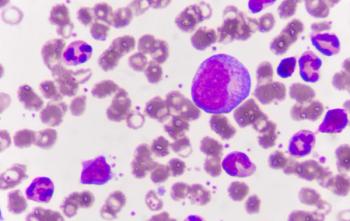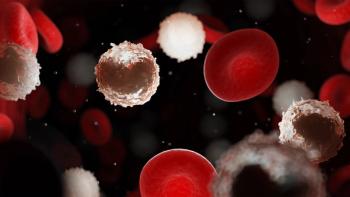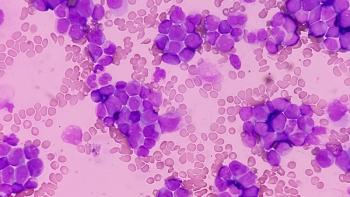
ASCO Recommends Abemaciclib for High-Risk HR+, HER2- Breast Cancer
A nurse practitioner discusses ASCO’s recommendations of CDK4/6 inhibitors—namely abemaciclib and ribociclib—in certain high-risk breast cancer settings.
The American Society of Clinical Oncology (ASCO) recently announced guidelines outlining a preference for abemaciclib (Verzenio) over
The recommendation is based on findings from the monarchE (NCT03155997) trial that compared
“With the CDK4/6 inhibitors, any of them can be chosen in the metastatic setting,” Michelle Taylor, ANP, an adult nurse practitioner at Dignity Health Cancer Institute at St. Joseph’s in Phoenix, AZ, said in an interview with Oncology Nursing News. “When we're choosing one over the other, I think it comes down more to practice patterns. In the adjuvant setting, abemaciclib is the only one we use based on its approval. In the metastatic setting, we've been favoring abemaciclib of a bit more just based on tolerance.”
Adverse Effect Profile: Ribociclib Vs Abemaciclib
Taylor explained that a rise in liver enzymes is more common with ribociclib than abemaciclib. The drug also tends to have a higher rate of QT prolongation, she said. “If there is someone who already has an underlying cardiac history or multiple medications that can cause QT prolongation, we’re watching that pretty closely.”
With abemaciclib, Taylor said that she more commonly observes changes in kidney function.
“That may or may not be a true drop in [glomerular filtration rate (GFR)]. We’ll typically add a cystatin C [test] to see if that is true or not,” she said. “But as far as the main toxicities, we do see a bit more diarrhea with abemaciclib than we do with the other drugs, but we find that with proactive management, we can typically keep the drug going.”
At her practice, Taylor mentioned that she and her colleagues are comfortable with dose reduction. A subgroup analysis of monarchE showed that dose reductions do not compromise the efficacy of abemaciclib when given in the adjuvant setting to patients with high-risk early-stage breast cancer. Researchers on the analysis divided patients into three groups of relative dose intensity, and compared 4-year invasive disease-free survival (IDFS) among each group. Data showed:
- 87.1% 4-year IDFS rate in patients who received ≤66% dose intensity
- 86.4% 4-year IDFS rate in patients who received a 66-93% dose intensity
- 83.7% 4-year IDFS rate in patients who received ≥93% dose intensity4
CDK46 Inhibitors for High-Risk Breast Cancer
The ASCO guidelines specifically state that abemaciclib is recommended for patients with high-risk disease. The guidelines explained, “It is important to note that the forest plot in NATALEE did not suggest differential benefit in the lower-risk patients included in the study …”1
Although the patient population was broader in NATALEE, in monarchE, high-risk breast cancer was defined by the following criteria: 4 or more positive axillary lymph nodes or 1-3 positive axillary lymph nodes; grade 3 disease; tumor size ≥5 cm; or Ki-67 index ≥20%.2
Taylor also mentioned that she considers other patient characteristics, too, when determining breast cancer risk status.
“It’s not necessarily part of the guidelines, but certainly in the breast oncology field, we look to see the patient’s age and other risk factors as well,” she said. “And we really follow the size of the tumor and the grading of the lymph node involvement.”
The Future of CDK4/6 Inhibitors for Breast Cancer
Currently, Taylor said that she also utilizes these CDK4/6 inhibitors in the adjuvant setting for those with metastatic disease and in the local recurrence setting.
“We have found success in each of those areas,” she said. “It would be interesting to see that move into the neoadjuvant setting, of course, tied with endocrine therapy … I think CDK4/6 inhibitors, with the right patient, have a place in each setting.”
References
1. Caswell-Jin JL, Freedman RA, Hassett MJ, et al. Optimal Adjuvant Chemotherapy and Targeted Therapy for Early Breast Cancer—CDK4/6 Inhibitors: ASCO Rapid Guideline Update Clinical Insights. JCO Oncology Practice. September 20, 2024.
2. Rastogi P, O’Shaughnessy J, Martin M, et al. Adjuvant Abemaciclib Plus Endocrine Therapy for Hormone Receptor–Positive, Human Epidermal Growth Factor Receptor 2–Negative, High-Risk Early Breast Cancer: Results From a Preplanned monarchE Overall Survival Interim Analysis, Including 5-Year Efficacy Outcomes.January 9, 2024. Journal of Clinical Oncology. doi.org/10.1200/JCO.23.01994
3. Fasching PA, Stroyakovskiy D, Yardley DA, et al. Adjuvant ribociclib plus nonsteroidal aromatase inhibitor in patients with HR+/HER2– early breast cancer: 4-year outcomes from the NATALEE trial. Presented at the 2024 European Society for Medical Oncology Congress (ESMO); September 13-17, 2024; Barcelona, Spain. LBA13.
4. Goetz MP, Cicin I, Testa L, et al. Impact of dose reductions on adjuvant abemaciclib efficacy in patients with high-risk early breast cancer: analyses from the monarchE study. April 26, 2024. npj Breast Cancer.
Newsletter
Knowledge is power. Don’t miss the most recent breakthroughs in cancer care.
















































































